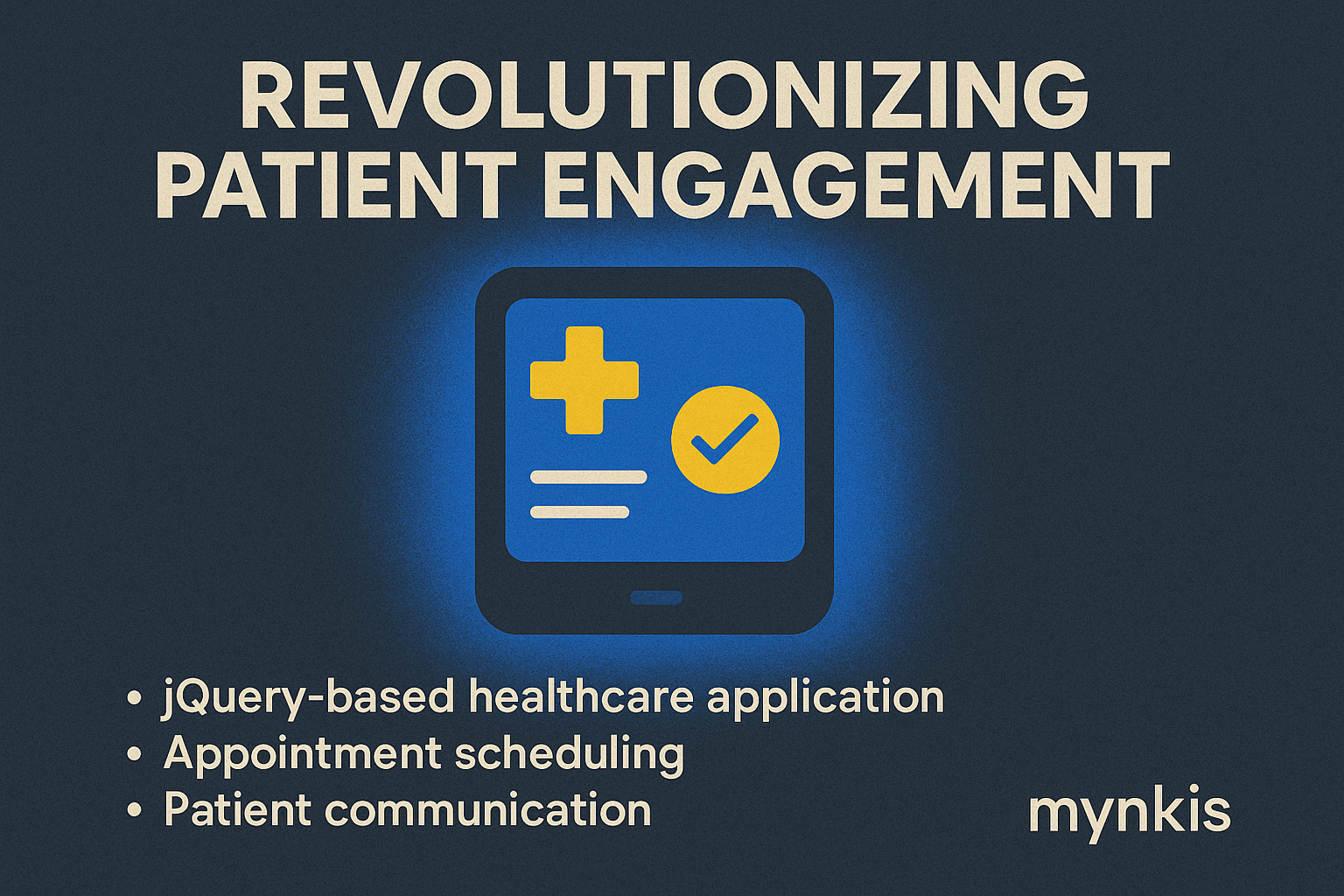Schedule a Demo
In the realm of healthcare, patient engagement is paramount. It's not just about providing the best medical care; it's about creating seamless, interactive experiences that make patients feel connected and informed. As clinics and hospitals navigate the complexities of compliance and security, the tools they use to engage patients become crucial. This is where jQuery enhancements come into play, transforming static websites into dynamic portals for patient interaction.
jQuery, a fast and concise JavaScript library, empowers developers to build websites that are not only visually appealing but also highly interactive. For healthcare providers, this translates into better patient portals, more informative health pages, and streamlined user interfaces. By leveraging jQuery's robust features, healthcare websites can deliver personalized content, real-time updates, and responsive designs that cater to both mobile and desktop users.
One of the most compelling aspects of jQuery is its ability to enhance user experience. From dynamic form validations to interactive data visualizations, jQuery allows developers to create seamless experiences that keep patients engaged. Imagine a patient portal where patients can easily navigate their medical records, schedule appointments, or view their health summaries with intuitive, interactive elements. This level of interactivity not only improves patient satisfaction but also encourages ongoing engagement with healthcare services.
When integrating jQuery into healthcare websites, compliance and security are non-negotiable. In my experience working with operations managers in healthcare, I've seen how critical it is to ensure that all interactive elements meet HIPAA standards. jQuery's modularity allows for secure implementation of interactive features without compromising on compliance. It's essential to use scripts that are thoroughly tested and maintained, ensuring that patient data remains secure while still providing an engaging user experience.
Healthcare is increasingly data-driven, and patients expect access to their health information in real time. jQuery excels at creating dynamic data visualizations, from interactive graphs that display a patient's health trends to real-time updates on lab results. These visualizations not only make complex data accessible but also allow patients to take an active role in their health management. I've found that when patients can interact with their data, they are more likely to make informed decisions about their care.
Personalization is a buzzword for a reason—it works. With jQuery, healthcare providers can tailor patient portals to individual needs, delivering customized health tips, appointment reminders, and relevant information based on the patient's history and preferences. This level of personalization not only enhances the user experience but also fosters a deeper connection between patients and their healthcare providers. In my consultations with clinic managers, I've emphasized the importance of this personalized approach in boosting patient loyalty and satisfaction.
Navigating a healthcare website should be as straightforward as possible. jQuery offers a variety of tools to streamline navigation, making it easier for patients to find what they need, when they need it. From collapsible menus to interactive tabs, these features enhance accessibility and ensure that patients can easily access critical information. Based on available research, improving navigation can significantly reduce the cognitive load on users, which is particularly important in healthcare where information can be complex and overwhelming.
Collecting patient feedback is essential for improving healthcare services. jQuery can transform static forms into interactive experiences that are both user-friendly and informative. Features like auto-complete, inline validation, and interactive help tips make filling out forms less daunting and more engaging. This interactivity not only encourages more patients to provide feedback but also ensures that the data collected is accurate and actionable. I've seen firsthand how these interactive forms can lead to higher response rates and more meaningful data for healthcare providers.
In today's mobile-first world, it's critical that healthcare websites are accessible on any device. jQuery's flexibility allows for the creation of responsive designs that adapt seamlessly to different screen sizes. This ensures that patients can access their health information, schedule appointments, or seek medical advice from their smartphones or tablets. Ensuring mobile accessibility is not just a convenience; it's a necessity for reaching patients where they are, enhancing the overall user experience across all platforms.
As technology evolves, so too will the role of jQuery in healthcare. The future promises even more sophisticated interactive features, from AI-powered chatbots for patient support to virtual reality elements for medical education. jQuery's open-source nature ensures that it will continue to be at the forefront of these innovations, offering healthcare providers the tools they need to create engaging, informative, and compliant websites. Staying ahead of these trends is essential for any healthcare organization looking to enhance patient engagement and improve overall care.
By integrating jQuery enhancements into your healthcare website, you can transform the way patients interact with your services. From real-time data visualizations to personalized patient portals, these interactive elements can elevate the user experience, ensuring that your patients feel valued, informed, and engaged. As you navigate the ever-changing landscape of healthcare technology, remember that the right tools can make all the difference in delivering exceptional patient care.
